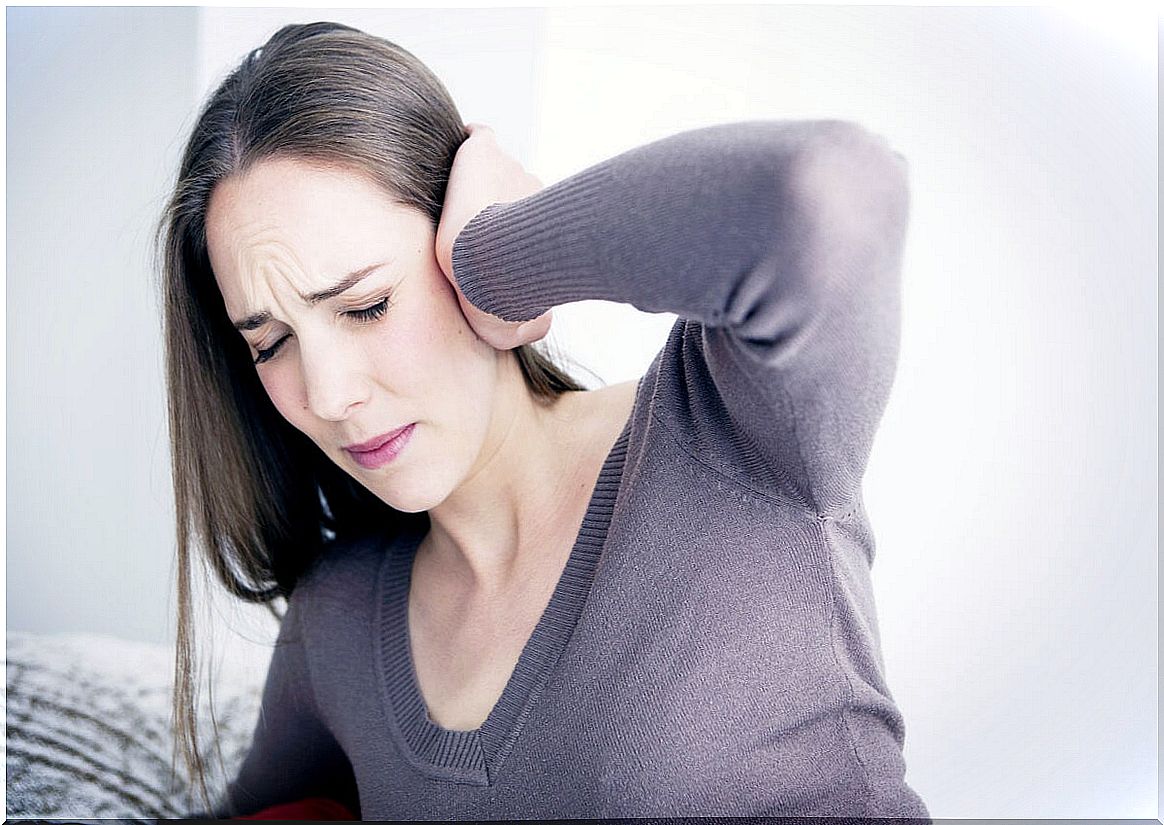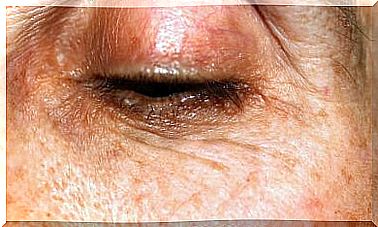What Are The Main Symptoms Of An Ear Infection?
Symptoms of ear infection vary depending on whether the outer, middle or deeper ear has been affected. It is a problem that is usually solved in a favorable way, as long as it is dealt with in time.

The most obvious of the ear infection symptoms is pain. However, depending on the type of pathology in question, sometimes it is not felt or it is accompanied by other manifestations that must also be taken into account.
Ear infection is a common problem that appears more often among children. In most cases it affects the middle ear and does not cause serious consequences. It is usually caused by a blockage in the Eustachian tube, a tube that connects the throat to the middle ear.
This obstruction responds to intrinsic causes when the mucosa in this area becomes inflamed, either by an infectious agent or an allergy. It can also be caused by extrinsic causes, when the adenoids (which are in the back of the throat) are inflamed.
Types and main symptoms of ear infection
As we had already noted, the symptoms of ear infection depend on the type of otitis in question. There are three modes: middle, external, and external malignant. Let’s look at each one in greater detail.
Otitis media
Otitis media is the most common form. The Eustachian tube blocks the drainage of fluid that occurs in the middle ear and cannot do this. In this way, the fluid accumulates and infection occurs.
The infection itself can be caused by a virus, fungus, or bacteria. If not treated properly and persists for a long time, it could lead to hearing loss in children. The symptoms of ear infection of this type are those that we expose next.
Symptoms
Symptoms of a middle ear infection come on suddenly and increase over time. The most common are the following:
- Severe pain and a feeling of pressure in the ears.
- Fever.
- Discharge from the ears or otorrhea. The secreted fluid may or may not contain pus.
- Lightheadedness and dizziness.
- Tinnitus: are ringing or buzzing in the ears that can come and go or be constant.
- Feeling of weakness
- Migraine.
- Rupture or perforation of the eardrum: it is a hole or tear in the tissue that separates the middle ear from the external ear. It can cause hearing loss in some cases.
Younger children usually have pain in the abdomen as well. When the ear secretes fluid, it means that the eardrum has been perforated. This relieves and makes the pain go away. The usual thing is that it heals in a few weeks, without treatment.

External otitis
Otitis externa is inflammation of the external auditory canal. This fulfills the role of carrying sounds from the outside to the eardrum. This modality is also known as swimmer’s ear because it usually originates when the ear is in intensive contact with water.
However, the cause is not always water. It is also caused by eczema, allergies, scratches or injuries caused by an object. Symptoms of external ear infection are different from those of the middle ear.
Symptoms
Symptoms of an external ear infection are generally visible to the naked eye. Among these, the following stand out:
- The ear canal is the hole that is seen inside the ear. Surrounding it may be redness, peeling, and inflammation.
- Fever and general ill feeling.
- Swollen lymph nodes in the neck and behind the ear.
- Hearing loss
- Secretions.
- Dizziness
Malignant external otitis
Malignant otitis externa occurs when the infection of the outer ear spreads to the bones of the ear canal and the base of the skull. It is not a very common modality and it occurs in those with weakened immune systems, the elderly and diabetics.
These types of infections are almost always caused by the bacteria Pseudomonas and can be fatal. Whatever the infectious agent, it is difficult to combat. It usually requires long and difficult treatments.
Symptoms
The main symptom of malignant external otitis is a severe pain in the ear that intensifies at night and worsens when moving the head. It is very common for there to be a foul yellow or green discharge from the ear.
Other symptoms of this ear infection include the following:
- Hearing loss.
- Itching and itching in the ear or ear canal.
- Fever.
- Weakness in the muscles of the face. On some occasions there may be paralysis of the facial nerves.
- Difficulty swallowing.

Tips to prevent an ear infection
The best way to prevent an ear infection is by applying a few simple care measures, especially when you come into contact with water. Pay attention to the following indications:
- Dry your ears well after getting wet: either in the shower, in the tub or in a pool. It is appropriate to dry the ear area well. It is best to use a clean, thin towel without inserting it into the ear canal.
- Do not use swabs to clean the ears: these types of implements can cause minor injuries in the area. Dabbing with a towel is much better.
- Protect yourself from water: if you are going to spend a lot of time in the water, use approved earplugs. Remove when done and dry your ears.
- Remove the remains of water: if you have been in the water for a long time, when you finish, tilt your head so that the remains come out; compress the ear with a towel and then dry the outer area.
- Avoid poor quality water: do not bathe places that have bad water.
- Protect the ear canal: when applying hair dyes or sprays, cover the ears with a little cotton.
Treat ear infection symptoms early
Ear infection symptoms can be very bothersome. Beyond that, this problem can be aggravated if it is not treated in time. Sometimes the infection spreads or becomes recurrent.
It is best to consult your doctor if there are symptoms of an ear infection. Treatment must be carried out as directed, especially if it includes antibiotics. In general, the prognosis is good if the medical indications are followed.








